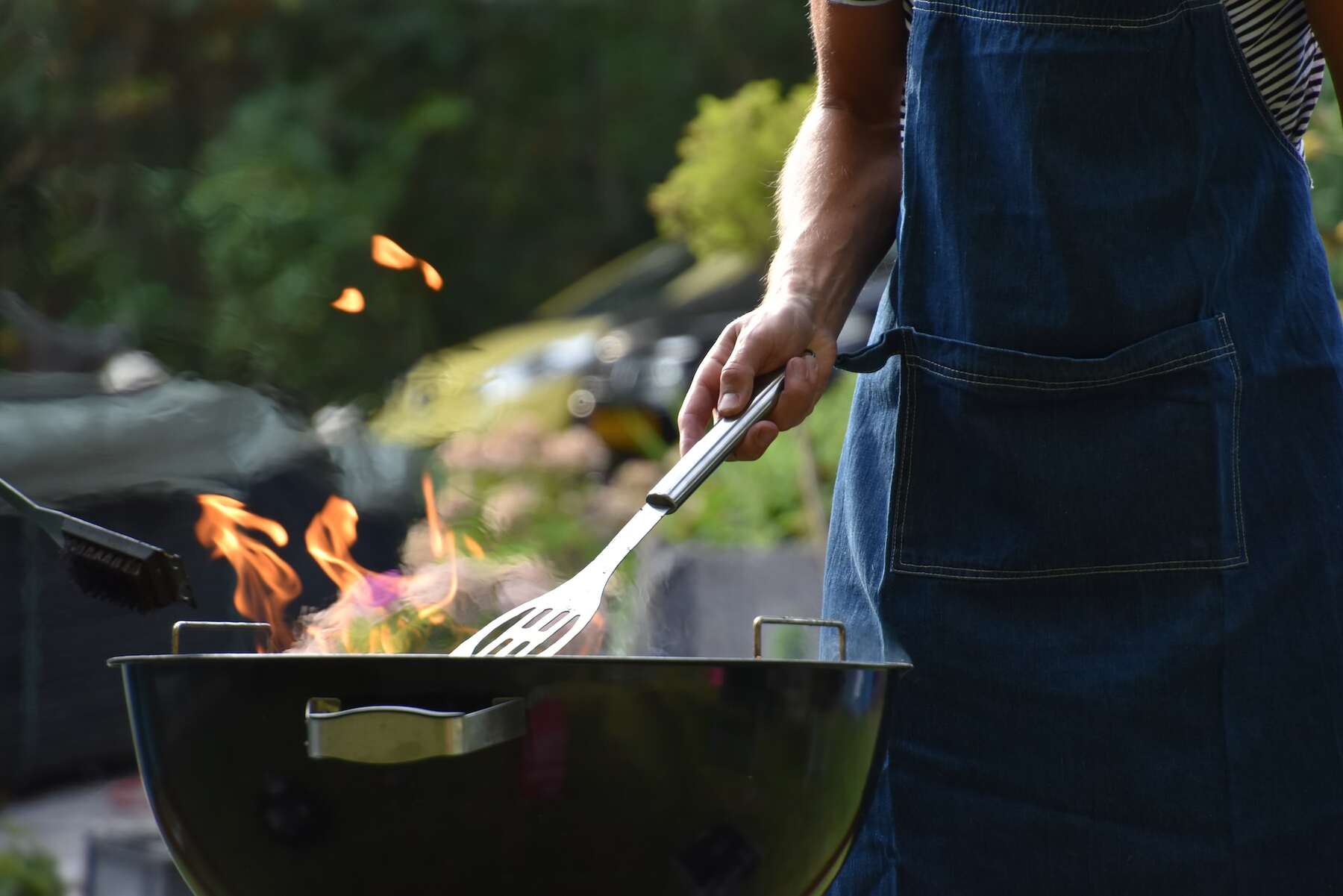Master Low-Carb Grilling: Benefits, Tips, and Tasty Recipes Guide

Suppose you're looking for a healthier alternative to traditional grilling to help you lose weight and reduce the risk of chronic diseases. In that case, low-carb grilling is an excellent option to consider.
Focusing on protein-rich and low-carbohydrate foods can create delicious and healthy meals perfect for summer barbecues or weeknight dinners.
In this ultimate guide to low-carb grilling, we'll explore the benefits of this approach, provide tips for getting started, and share some of our favorite low-carb grilling recipes that will satisfy your taste buds.
So, let's fire up the grill and start this journey to healthier eating!
What Is A Low Carb Grill?
A low-carb grill is a type of grill that is designed to cook foods that are high in protein and low in carbohydrates.
This type of grill is trendy among people who follow a low-carb diet, such as the ketogenic diet, which involves reducing carbohydrate intake while increasing protein and fat consumption.
Low-carb grills typically use indirect heat for cooking foods, which helps to preserve their moisture and flavor while minimizing the formation of harmful carcinogens.
They can cook various foods, including meats, fish, vegetables, and even low-carb desserts.
In addition to being a healthier option than traditional grilling, low-carb grilling is also a great way to add flavor and variety to your meals.
Benefits Of Using A Low Carb Grill
Low-carb grilling offers numerous benefits, including:
Helps With Weight Loss
By cooking low-carb foods on a grill, you can reduce your carbohydrate intake and increase your protein intake, which can help you lose weight.
Protein is also more filling than carbohydrates, so you may eat less overall when you include more protein.
Reduces The Risk Of Chronic Diseases
Low-carb diets have been shown to reduce the risk of several chronic diseases, including type 2 diabetes, cardiovascular disease, and cancer.
Using a low-carb grill can make healthier meals that are less likely to contribute to these conditions.
Provides A Healthy Alternative To Traditional Grilling
Traditional grilling methods, such as cooking over direct heat, can lead to the formation of harmful carcinogens.
Low-carb grilling, typically using indirect heat, can help minimize these compounds' formation while producing delicious, flavorful food.
Enhances The Flavor Of Foods
Grilling is a great way to add flavor to foods, and low-carb grilling is no exception. Using flavorful marinades and rubs, you can create delicious, savory dishes that will surely please your taste buds.
A low-carb grill can help you eat healthier, reduce your risk of chronic diseases, and enjoy delicious, flavorful meals.
What Are Some Popular Low-carb Grilling Recipes?
Low-carb grilling recipes are a great way to enjoy delicious, flavorful meals while maintaining a healthy diet.
Here are some popular low-carb grilling recipes that you can try:
- Grilled Chicken Breasts: Marinate chicken breasts in olive oil, garlic, rosemary, and lemon juice and then cook on a low-carb grill.
- Grilled Shrimp Skewers: Marinate shrimp in olive oil, garlic, lime juice, and chili powder before skewering and grilling.
- Grilled Salmon with Avocado Salsa: Grill salmon filets and then top them with fresh avocado salsa for a light and healthy meal.
- Grilled Asparagus: Toss asparagus spears in olive oil, garlic, and lemon juice before the grilling season.
- Grilled Zucchini: Slice zucchini into rounds and marinate in olive oil, garlic, and herbs before grilling.
- Grilled Portobello Mushrooms: Marinate portobello mushrooms in olive oil, balsamic glaze vinegar, and herbs before grilling.
Grilling is a great way to add variety to your diet, and low-carb grilling recipes can help you enjoy delicious meals that are also healthy.
One of the most popular low-carb grilling recipes is grilled steak kabobs—Marinate steak in olive oil, garlic, rosemary, and lemon juice before grilling over indirect heat.
Serve with grilled veggies such as zucchini or asparagus for a complete meal.
How Do You Eat Low Carbs On A BBQ?
Eating low-carb at a BBQ can be challenging but possible with simple tips and tricks. Here are some suggestions on how to eat low-carb at a BBQ:
Choose The Right MeatsChoose low-carb meats like beef, pork, chicken, and fish. Avoid processed meats like sausages and hot dogs, as they may contain hidden carbs. Pork chops
Skip The Buns And BreadAvoid buns and bread that are high in carbs. Instead, opt for lettuce wraps or eat your meats and vegetables independently.
Choose Low-carb SidesChoose low-carb side dishes like grilled vegetables, salads, or coleslaw made with low-carb dressings.
Avoid Sugary DrinksAvoid sugary drinks like soda and fruit juice, which are high in carbs. Instead, opt for water, unsweetened iced tea, or sugar-free beverages.
Use Low-Carb Sauces And MarinadesMany store-bought sauces and marinades contain sugar and carbs. Instead, make your low-carb versions using vinegar, mustard, herbs, and spices. When making low-carb sauces and marinades, soy sauce, basting sauce, and teriyaki sauce are common ingredients you may want to use.
Watch Your PortionsWhile it's tempting to load up on food at a BBQ, watch your portions and stick to a reasonable amount of low-carb foods.
Following these tips, you can enjoy a delicious low-carb BBQ without sacrificing taste or satisfaction.

Frequently Asked Questions about Low Carb Grilling
What are the key elements of successful grilling?
The key elements of successful grilling include choosing the right grill, maintaining proper temperature control, selecting the right fuel source, and using appropriate cooking techniques for the food being grilled.
What are the differences between charcoal and gas grills?
Charcoal grills use charcoal briquettes or lump charcoal as a fuel source, providing a smoky flavor to the food. Gas grills use propane or natural gas and offer more precise temperature control and quicker heat-up times.
How do I control the temperature on a charcoal grill?
Control the temperature on a charcoal grill by adjusting the airflow using the vents. Open vents increase airflow and raise the temperature, while closed vents decrease airflow and lower the temperature.
How can I prevent food from sticking to the grill grates?
Prevent food from sticking to the grill grates by cleaning them before and after each use and applying a thin layer of oil to the grates before grilling.
What is indirect grilling, and when should I use it?
Indirect grilling is a method where food is cooked away from the direct heat source, usually on a cooler part of the grill. It's best for larger or thicker cuts of meat that require longer cooking times to cook evenly without burning.
How do I know when my grilled food is done?
Use a meat thermometer to check the internal temperature of the food to determine doneness. You can also use visual cues, such as color and texture, as well as the time and temperature guidelines provided in recipes.
Should I marinate my meat before grilling?
Marinating meat can enhance flavor and tenderness, but it's not always necessary. When using high-quality, flavorful cuts of meat, a simple seasoning of salt and pepper may be sufficient.
How can I add more flavor to my grilled food?
Add more flavor to your grilled food by using marinades, dry rubs, flavored wood chips, or basting with sauces during the cooking process.
How do I grill vegetables and fruits?
Grill vegetables and fruits by cutting them into uniform sizes, tossing with oil and seasoning, and placing them directly on the grill grates or in a grilling basket. Cook until tender and slightly charred.
What safety precautions should I take while grilling?
Ensure safety while grilling by setting up the grill on a level surface away from flammable materials, never leaving the grill unattended, keeping a fire extinguisher nearby, and using heat-resistant gloves and long-handled tools.
Did You Know?
Low carb grilling can help support weight loss and blood sugar control by focusing on high-protein, low-carb foods such as meat, fish, and vegetables instead of high-carb options like bread and starchy sides.
Grilling at high temperatures can create a caramelization effect on the surface of low-carb vegetables, enhancing their natural sweetness and adding depth of flavor without any added sugar.
Using marinades, dry rubs, and herbs can not only add flavor to low-carb grilled foods but also provide additional health benefits through the antioxidants and nutrients found in these ingredients.
Low carb grilling options can include "meat alternatives" like Portobello mushrooms or thick slices of cauliflower, which can be seasoned and grilled to provide a satisfying, low-carb, plant-based meal.
Incorporating healthy fats, such as those found in avocado oil, olive oil, or grass-fed butter, while grilling can help promote satiety and support a low-carb or ketogenic diet.
Related Studies
Grilling and other high-temperature cooking may increase risk of high blood pressure
This study found a potential link between high-temperature cooking methods like grilling and an increased risk of high blood pressure.
Link: https://www.ahajournals.org/doi/10.1161/CIRCULATIONAHA.118.033636
The influence of grilling techniques on the formation of heterocyclic amines in meat
This study examines how different grilling techniques affect the formation of potentially harmful compounds called heterocyclic amines in meat. Link:https://www.ncbi.nlm.nih.gov/pmc/articles/PMC6470839/
Grilling practices and preferences of US consumers
This study explores the grilling practices and preferences of US consumers, providing insights into trends, cooking techniques, and safety measures.
Link: https://www.sciencedirect.com/science/article/abs/pii/S030917401630229X
The effects of grilling on the nutritional quality of fish and meat
This review discusses the impact of grilling on the nutritional quality of fish and meat, including changes in protein, fat, and mineral content.
Link: https://www.sciencedirect.com/science/article/abs/pii/S2213453014000040
Grilled vegetables: Effect of thermal treatment on antioxidant capacity and total phenolic content
This study investigates how grilling affects the antioxidant capacity and total phenolic content of various vegetables, which may have implications for their health benefits.
Link: https://pubmed.ncbi.nlm.nih.gov/29428096/
Did You Know?
Low carb grilling can help support weight loss and blood sugar control by focusing on high-protein, low-carb foods such as meat, fish, and vegetables instead of high-carb options like bread and starchy sides.
Grilling at high temperatures can create a caramelization effect on the surface of low-carb vegetables, enhancing their natural sweetness and adding depth of flavor without any added sugar.
Using marinades, dry rubs, and herbs can not only add flavor to low-carb grilled foods but also provide additional health benefits through the antioxidants and nutrients found in these ingredients.
Low carb grilling options can include "meat alternatives" like Portobello mushrooms or thick slices of cauliflower, which can be seasoned and grilled to provide a satisfying, low-carb, plant-based meal.
Incorporating healthy fats, such as those found in avocado oil, olive oil, or grass-fed butter, while grilling can help promote satiety and support a low-carb or ketogenic diet.
Final Thoughts
Low-carb grilling is a fantastic way to enjoy healthy, delicious meals perfect for summer barbecues or weeknight dinners.
By focusing on protein-rich and low-carbohydrate foods, you can create a variety of mouth-watering dishes that are sure to satisfy your taste buds.
With the benefits of weight loss, reduced risk of chronic diseases, and the ability to add flavor and variety to your meals, low-carb grilling is an excellent option for anyone looking to eat healthier.
So, let's fire up the grill and enjoy all summer's delicious low-carb recipes!
Popular Articles
Low Carb Popsicles: The Perfect Summer Snack for a Healthy Lifestyle
Low Carb Butternut Squash: A Delicious and Nutritious Addition to Your Diet
Exploring the Benefits and Deliciousness of Low Carb Root Vegetables
